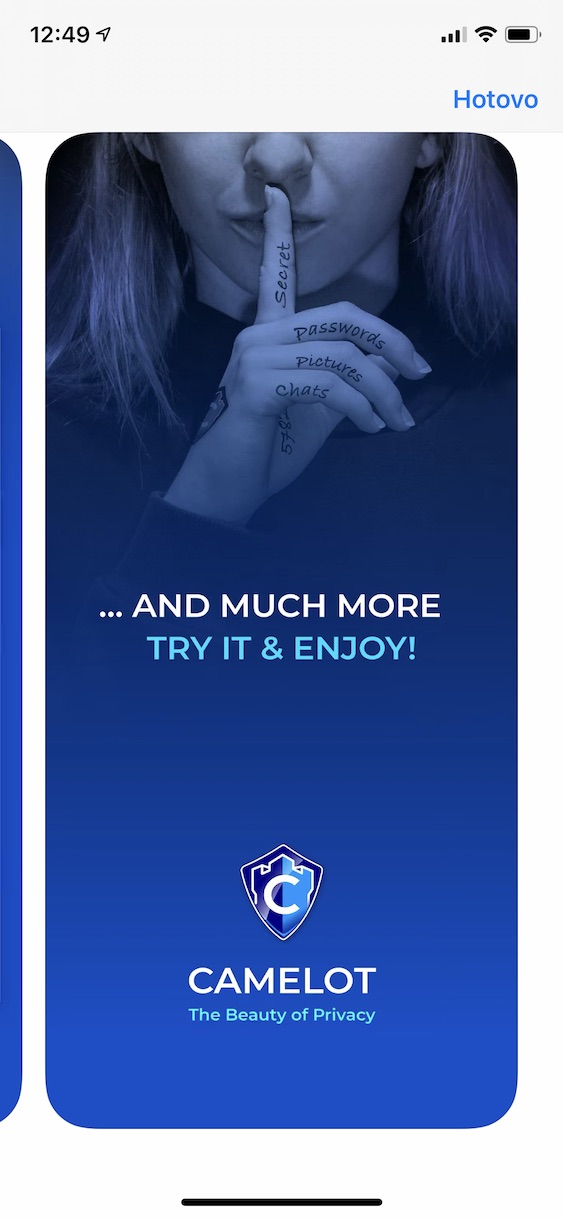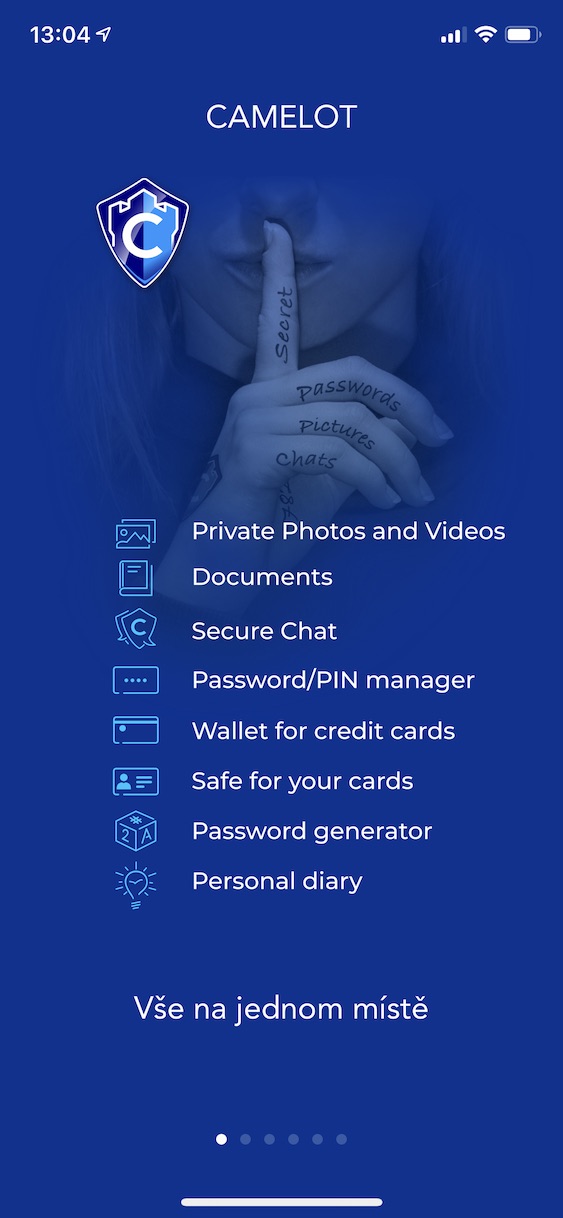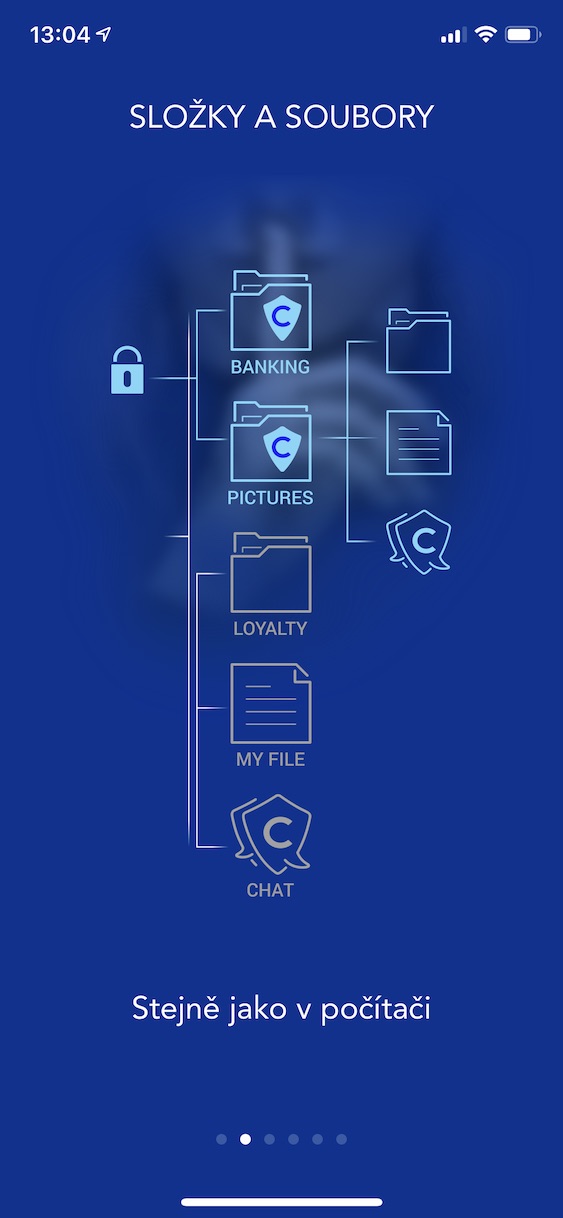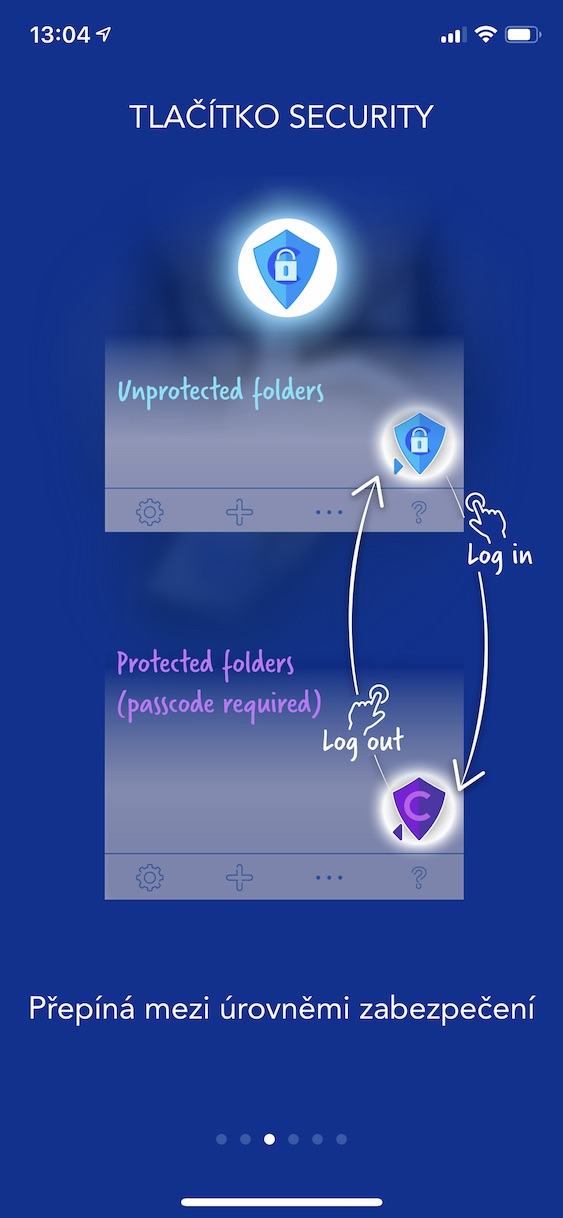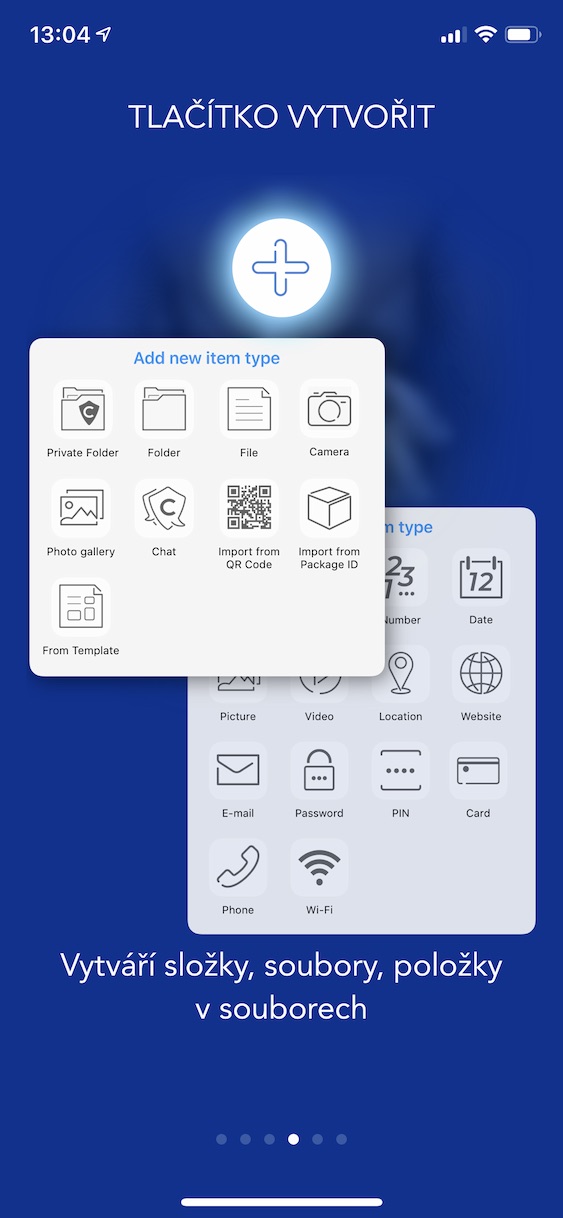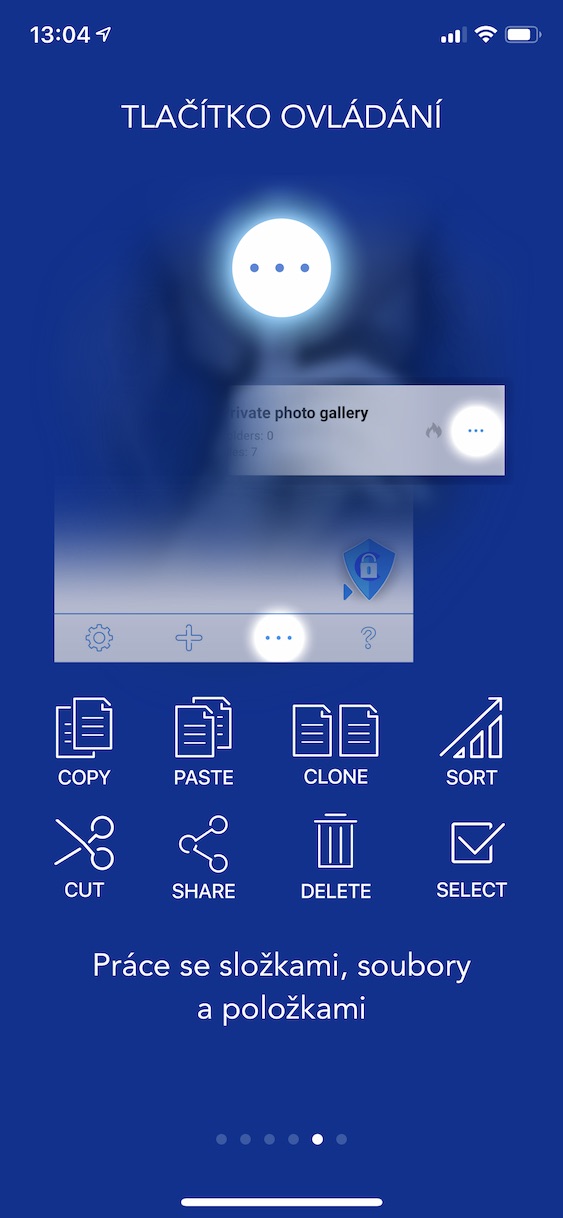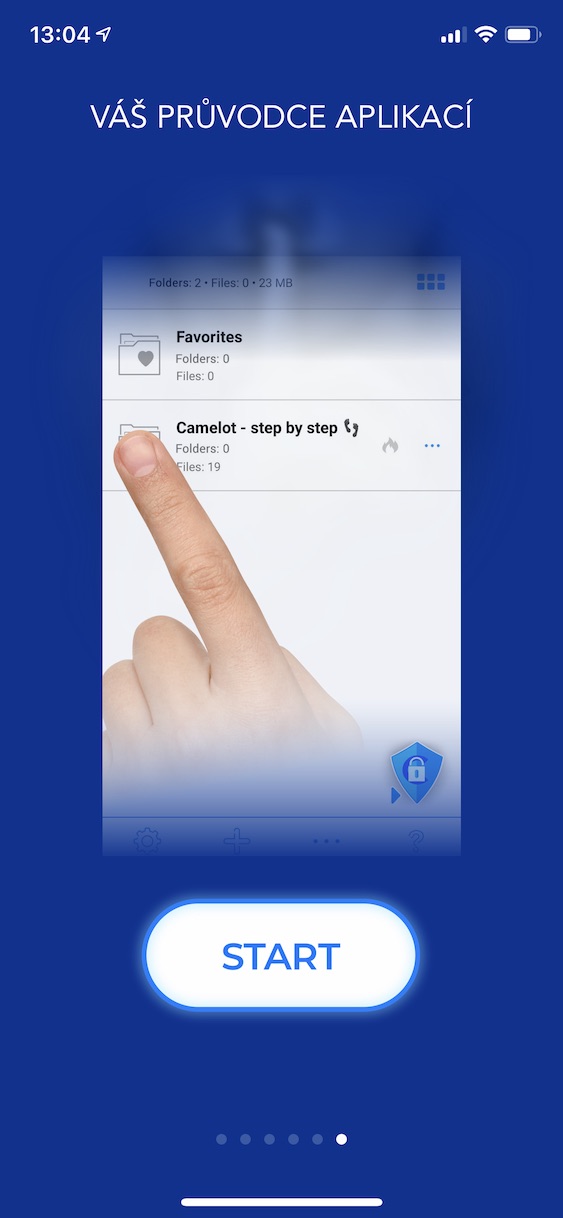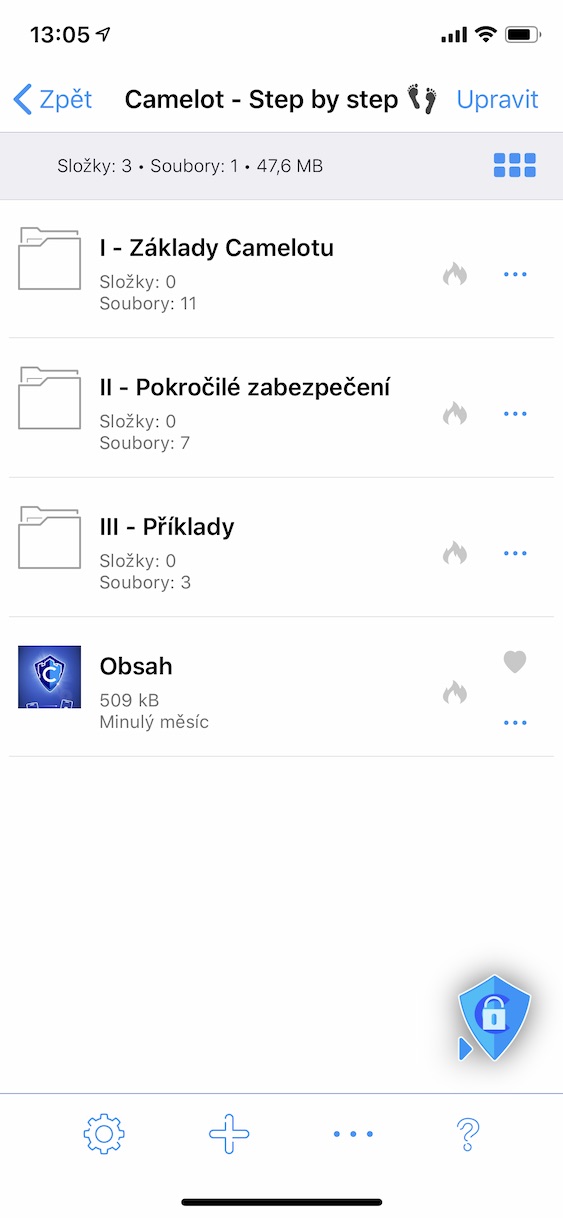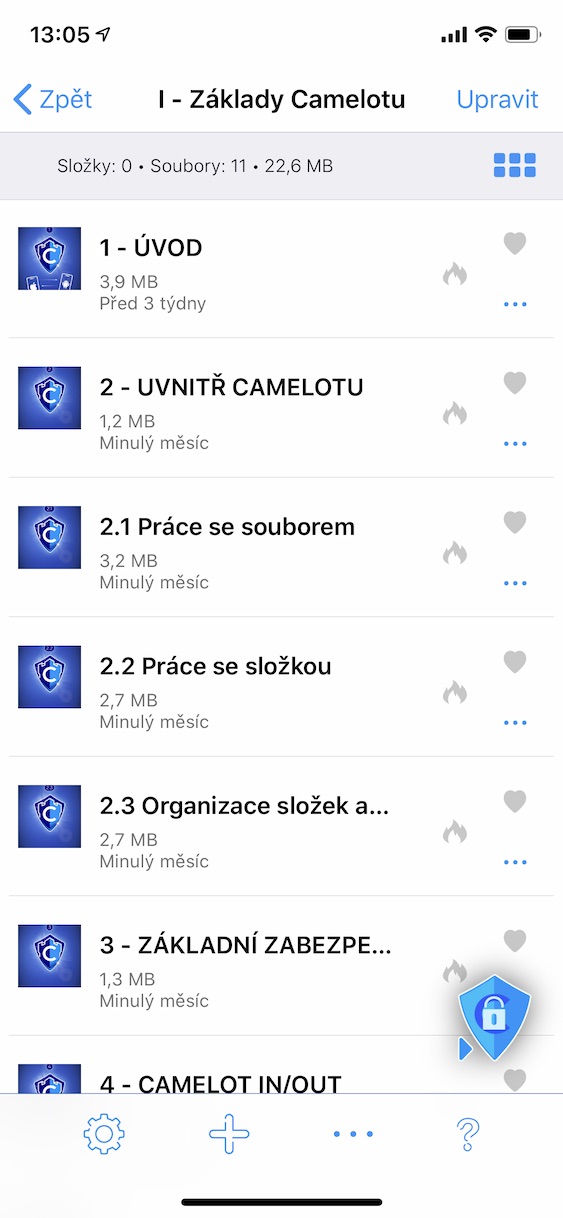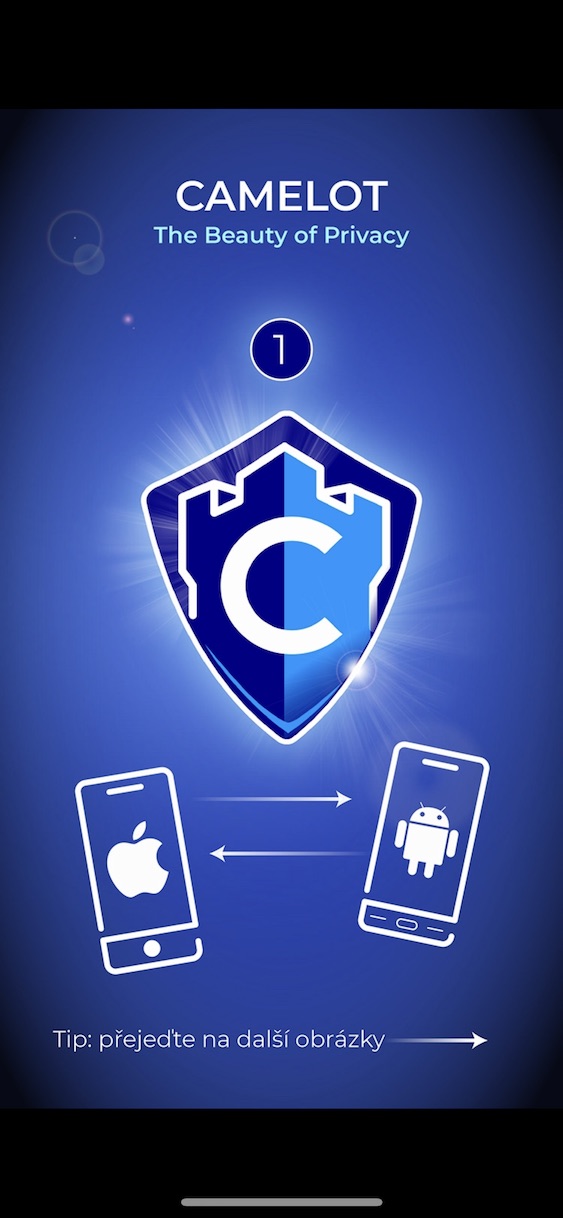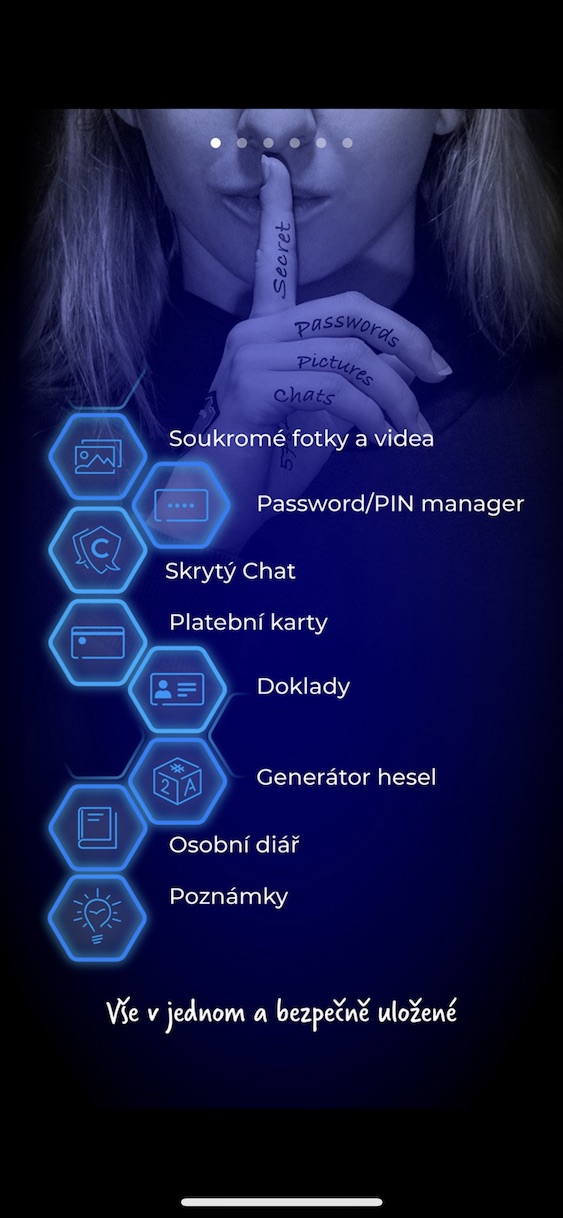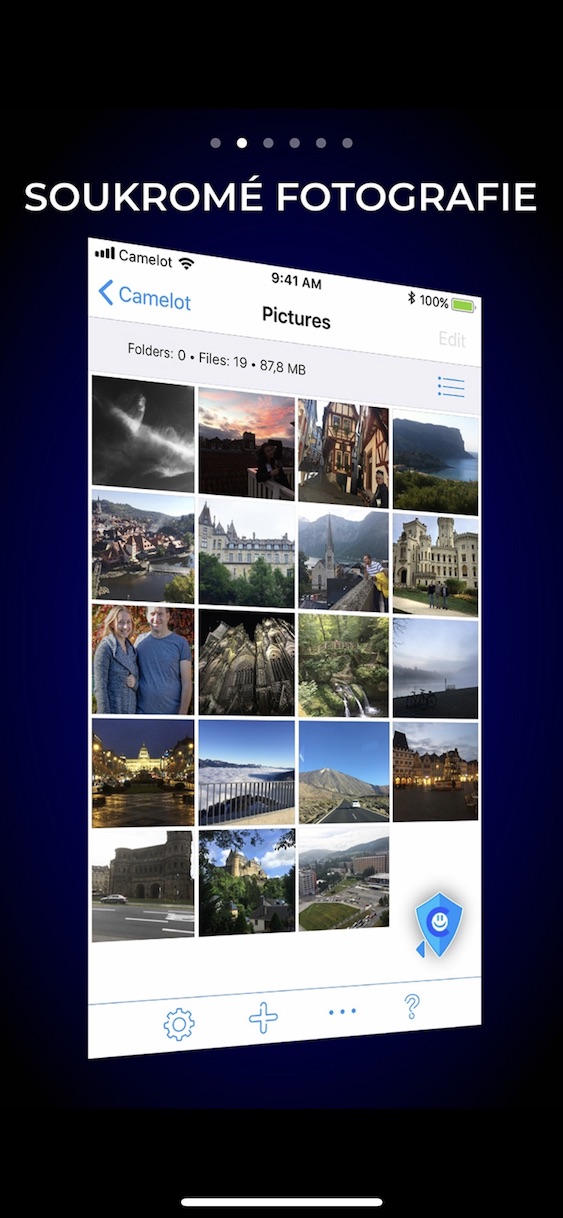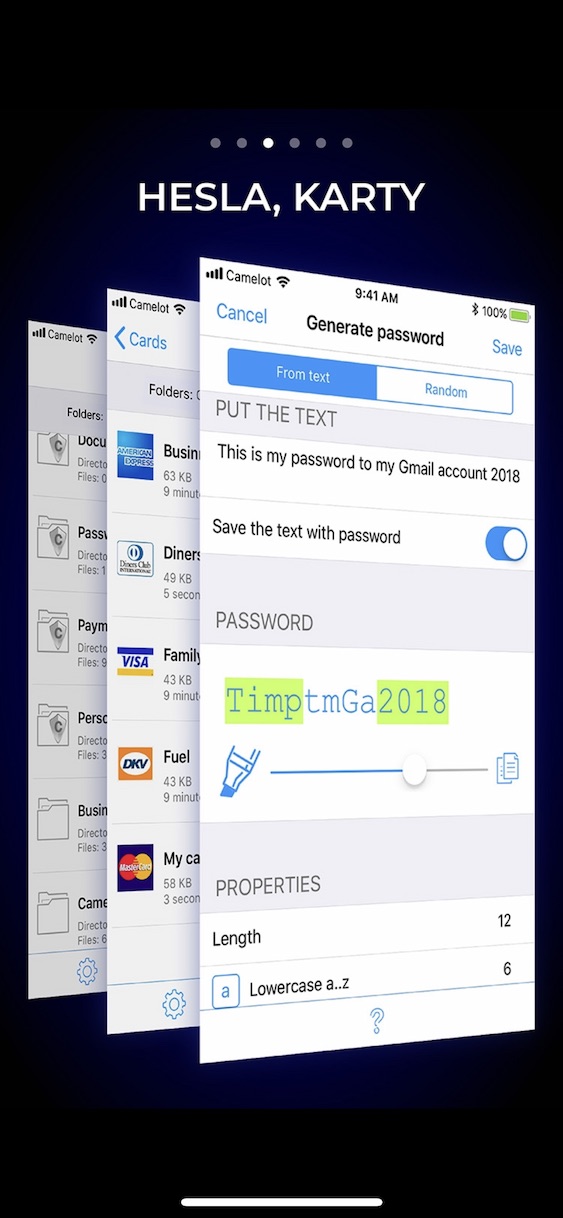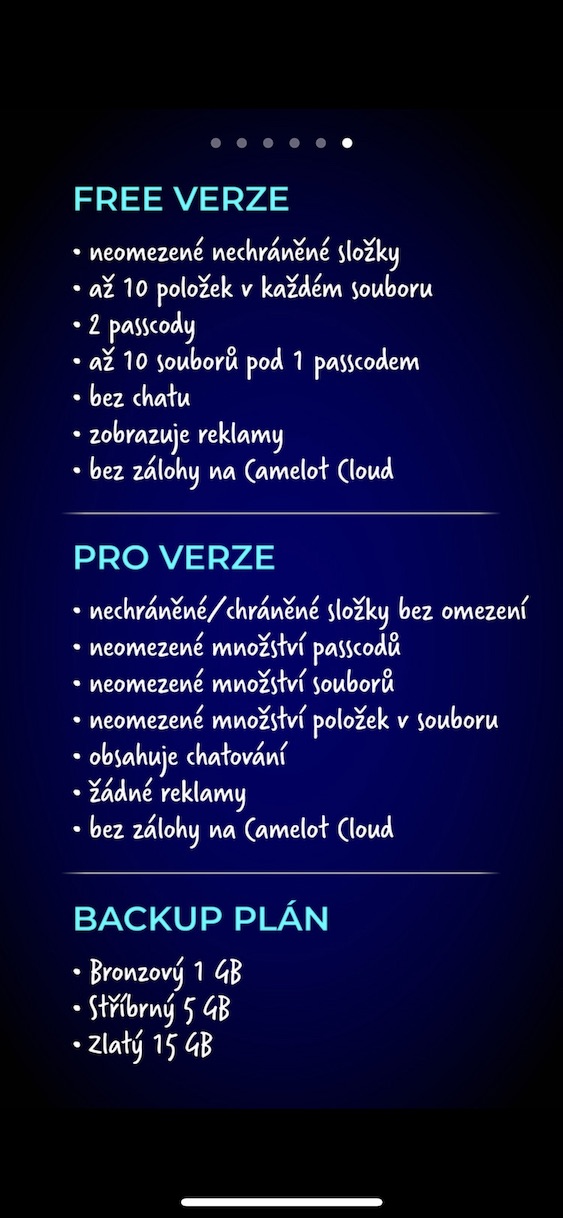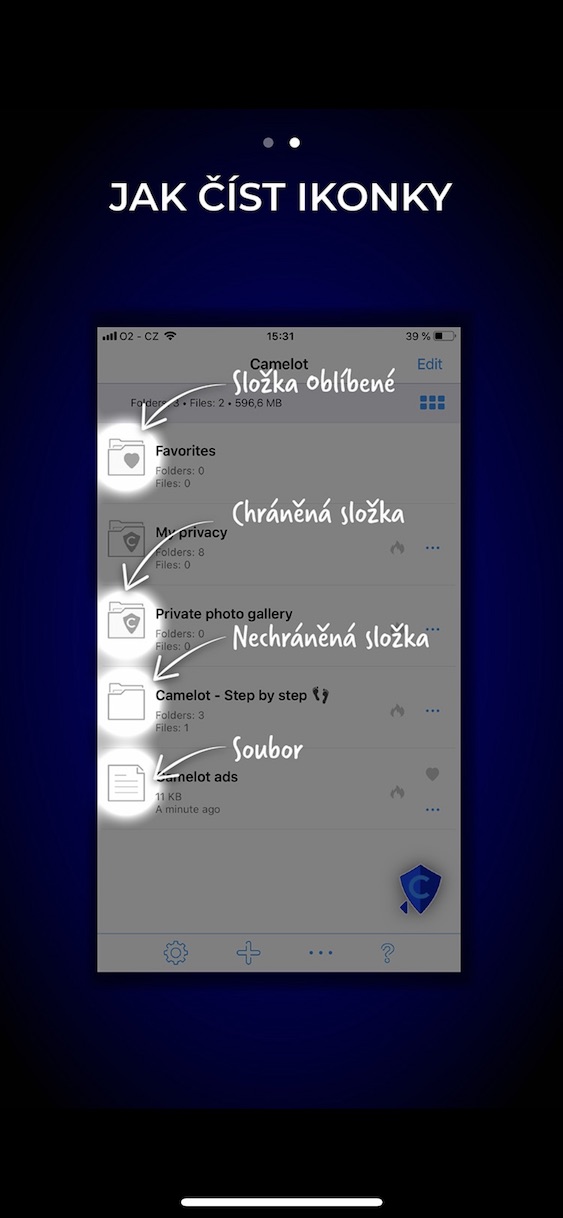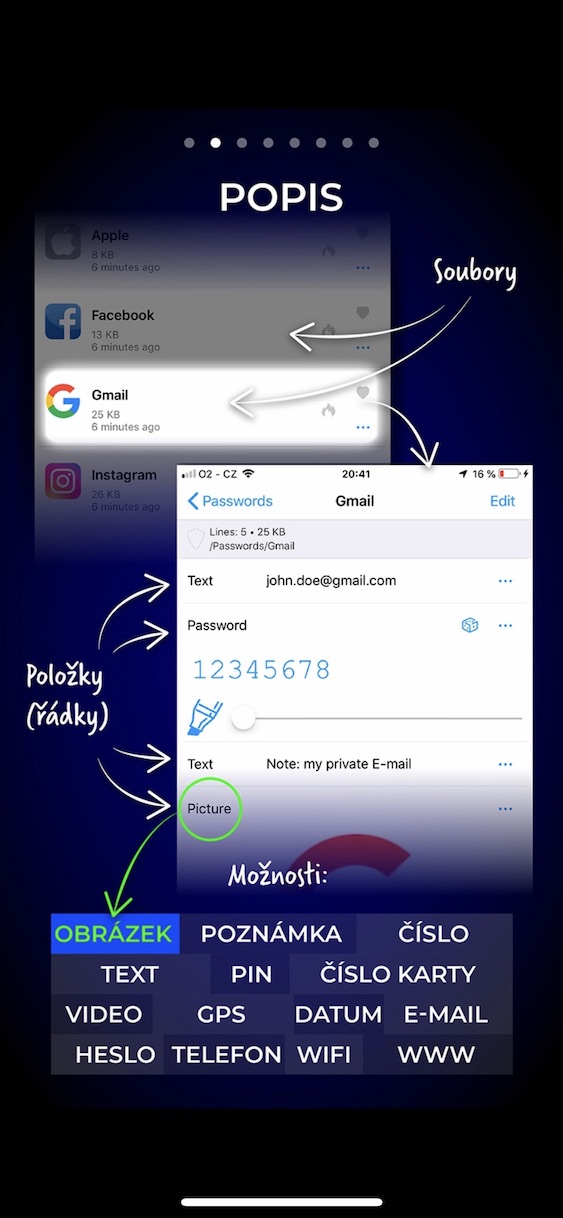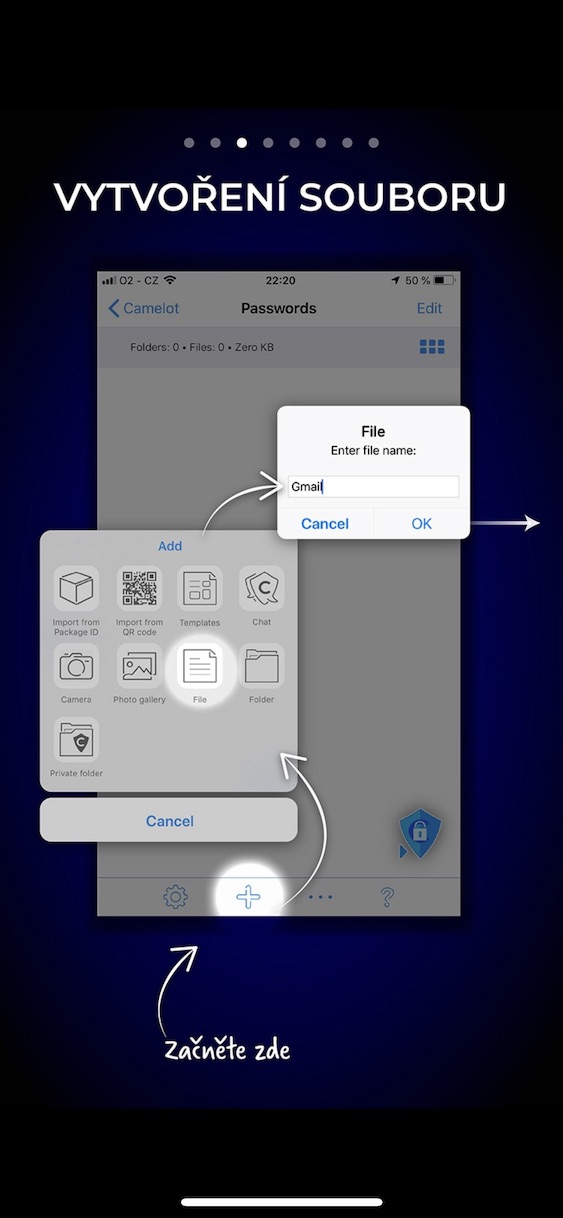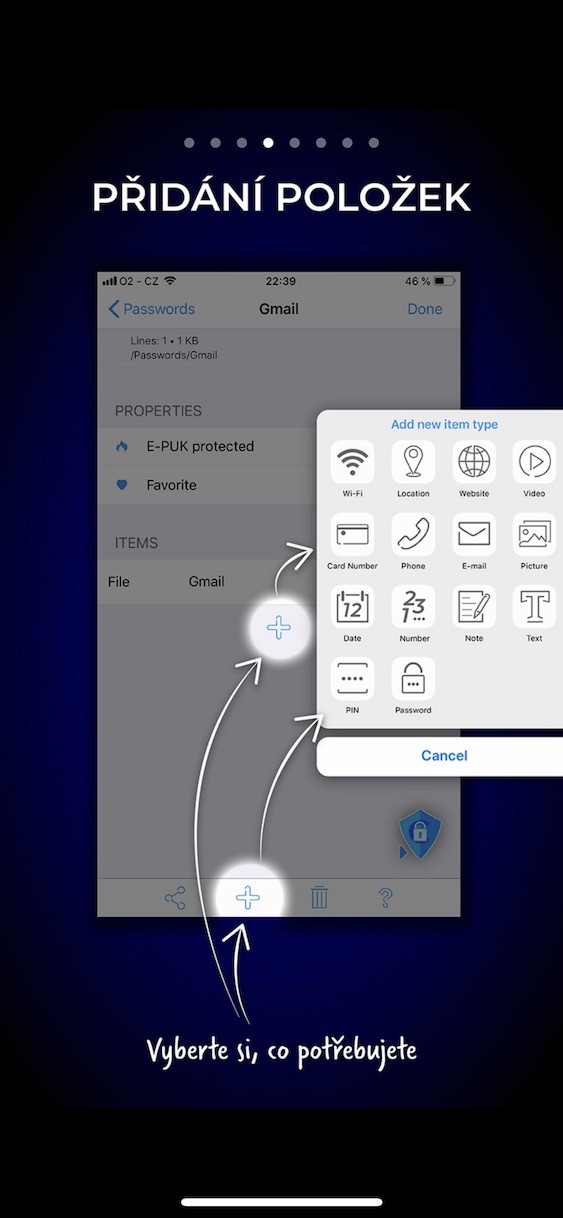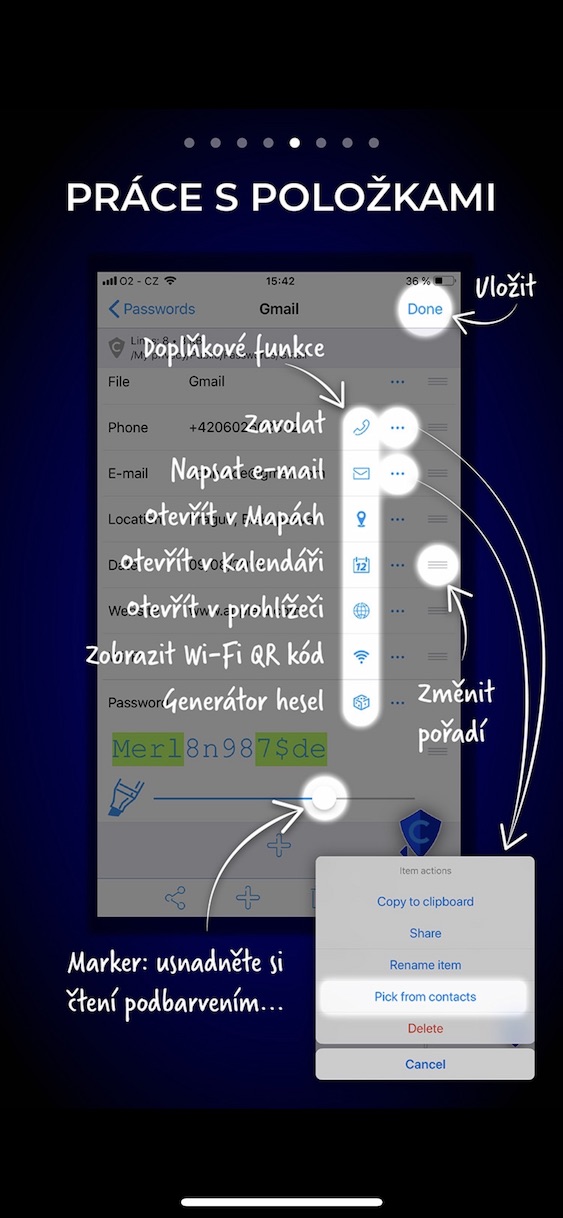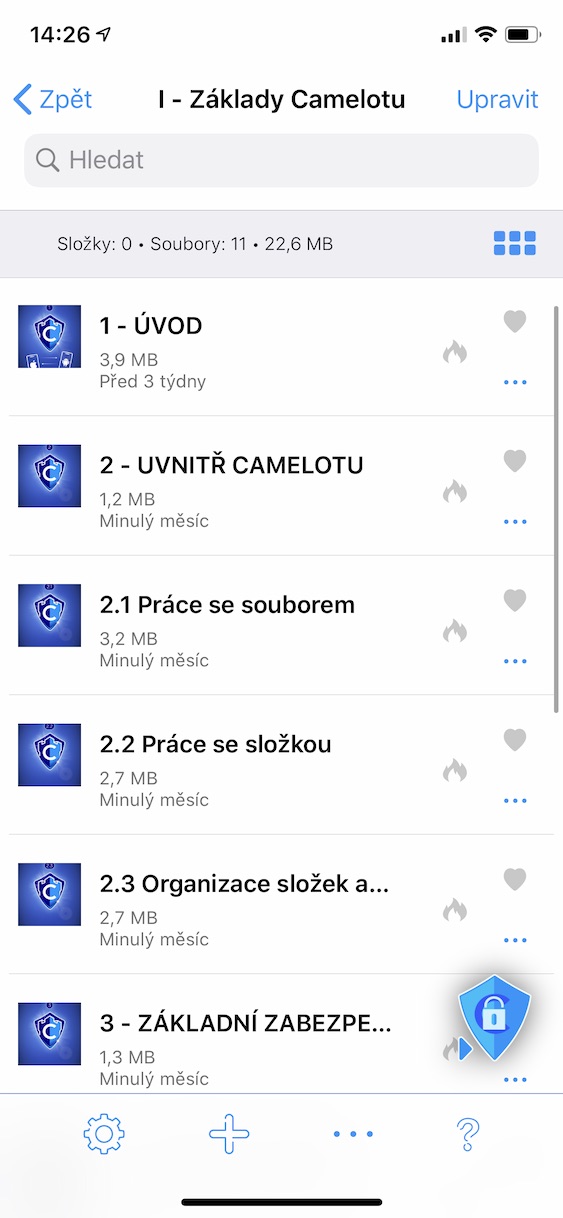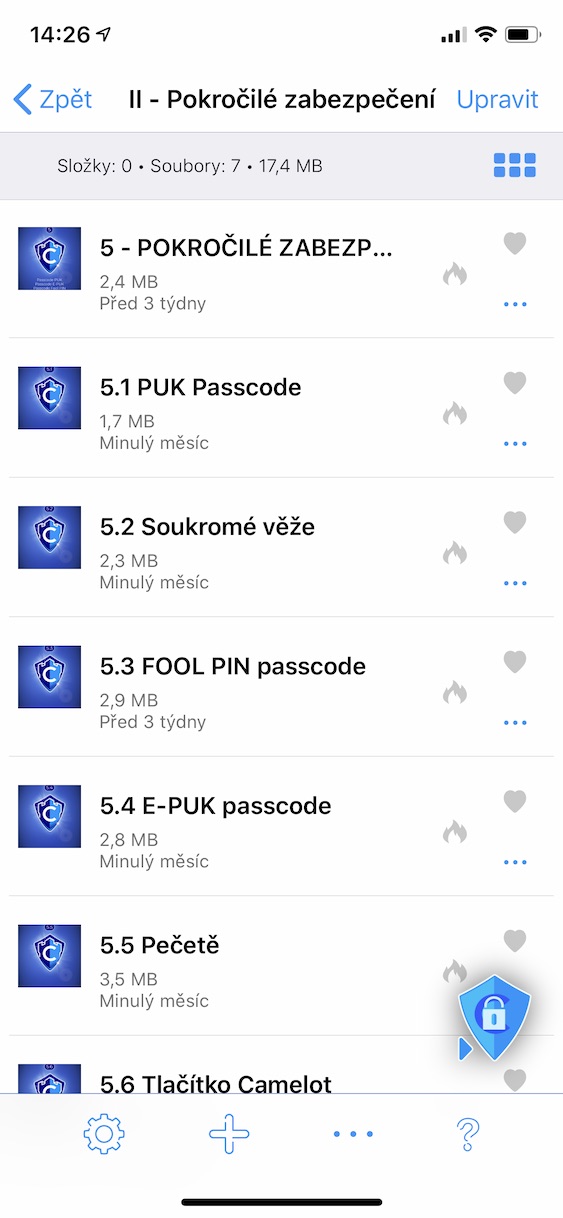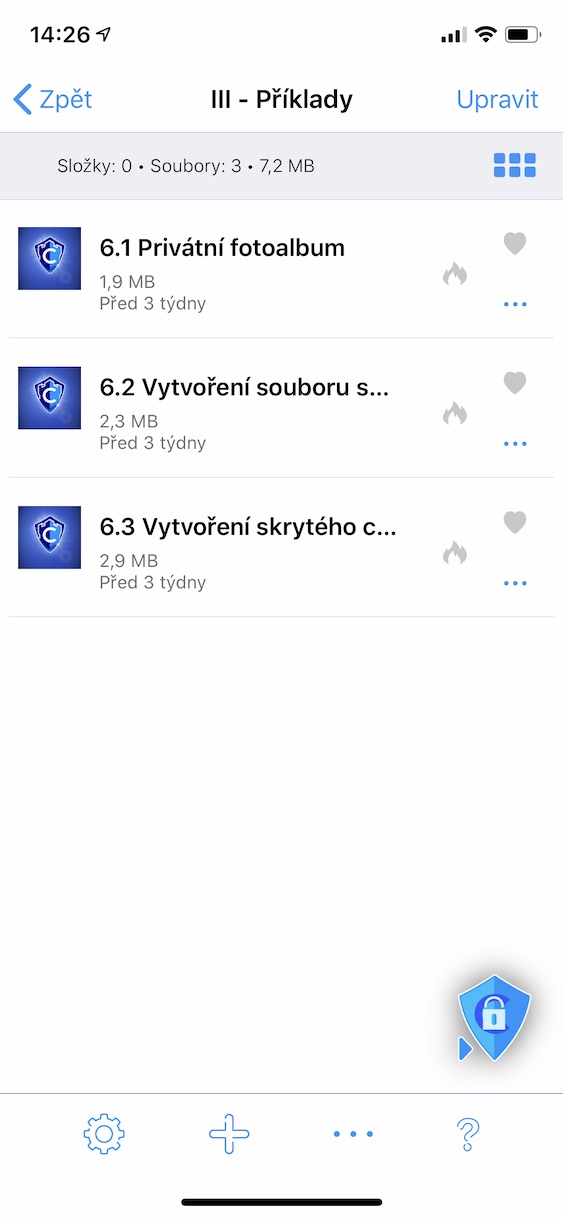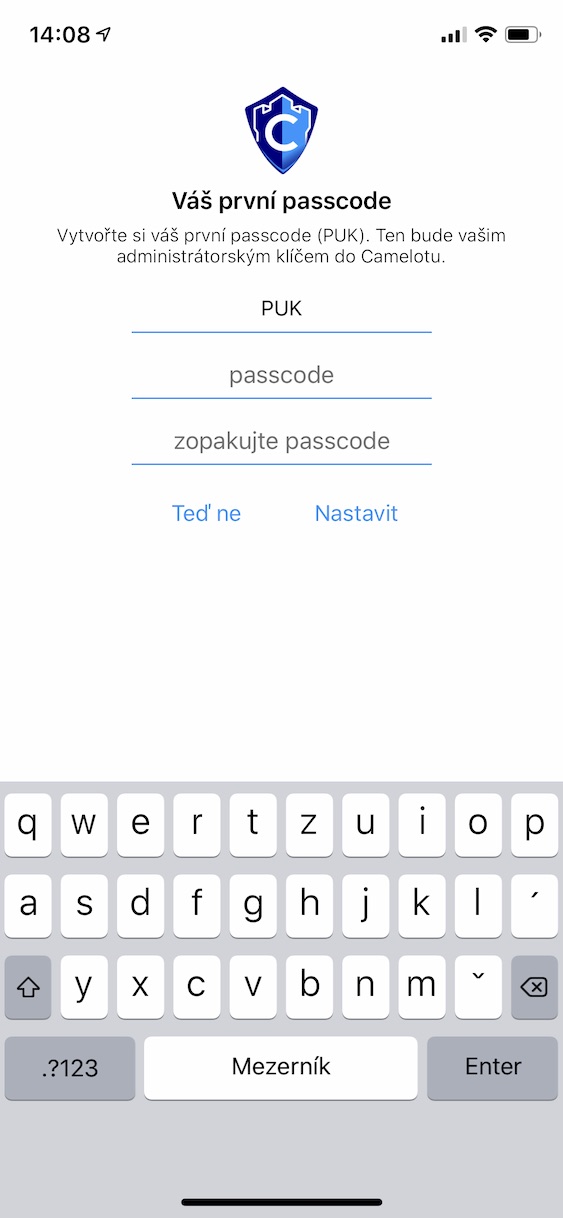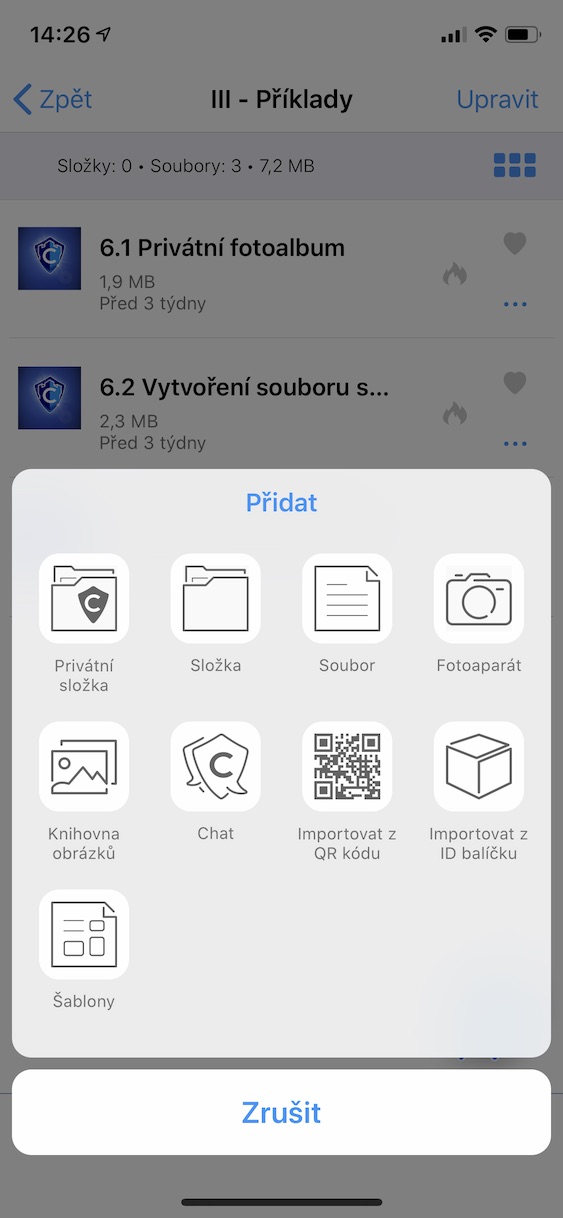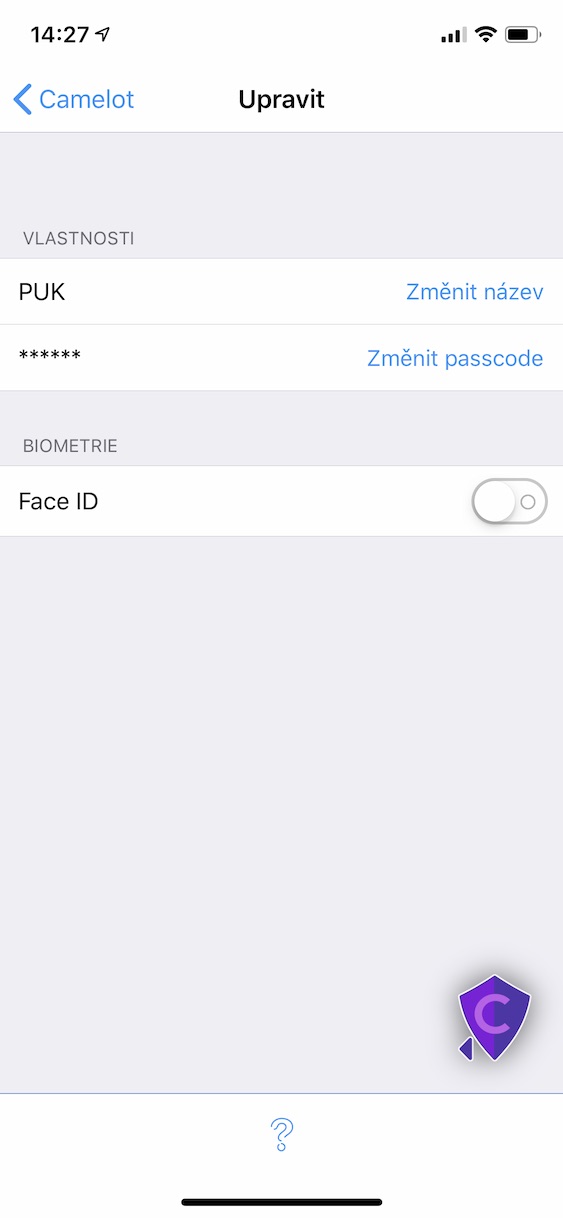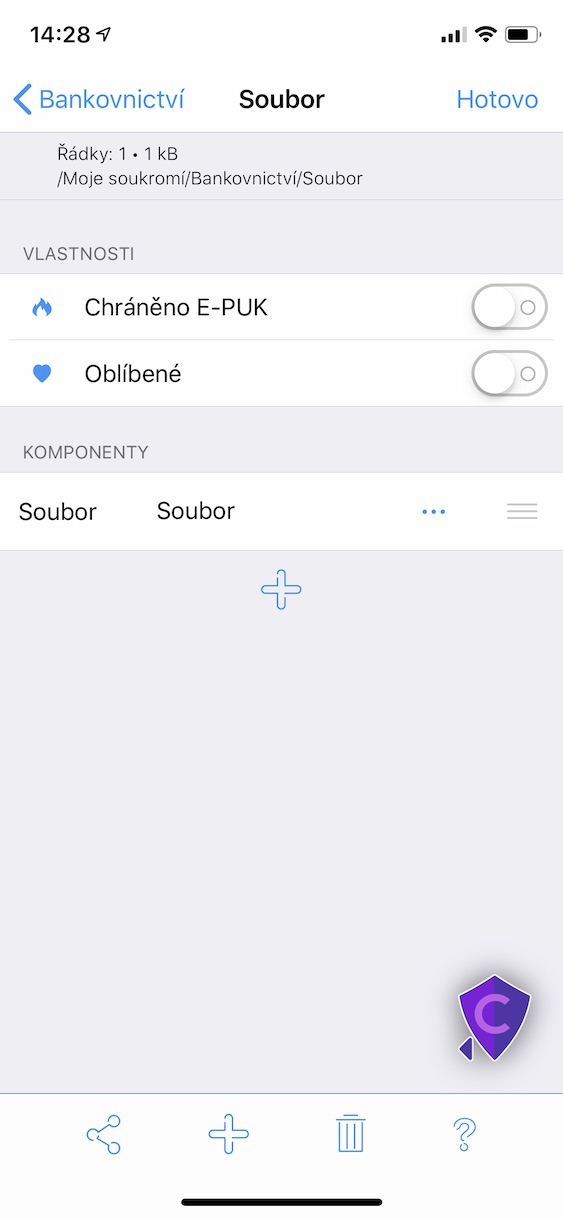Security and privacy is a hotly debated topic these days. The operating system itself iOS and other systems from Apple are already very secure in themselves. However, if someone discovers the access code to your device, they suddenly have access to practically all possible data. Whether it's photos, notes, reminders or documents. There are countless apps available in the App Store that allow you to easily lock certain files. However, if you download such an application, for example to lock important notes, then anyone who gets into your device knows that you are hiding something. If, God forbid, someone puts a gun to your head, you will most likely unlock the application itself, which will take the data in question.
Why Camelot?
Conspicuousness and only one purpose - these are exactly the biggest weaknesses of security apps from the App Store. The Camelot application decided to fill this "hole". If you think Camelot is just another app that can put your files under a simple lock, you're wrong. This is because it is a very complex and sophisticated application that simply and simply takes into account absolutely everything that can happen to you in life. Whether you are looking for locking important data and files, saving passwords, or for example a secure chat, Camelot can offer you all this and much more. However, I will mention right at the beginning that this application is definitely not for everyone. The Camelot user must first learn how to use the application. Only then will you recognize its true charm and the fact that you would be hard-pressed to find a similarly sophisticated application among security applications.
Camelot should turn your device into an impregnable castle - that's the motto of the app itself. And I have to say that it is really true. Whether you belong to a higher social class or an ordinary person, Camelot can easily suit you in both of these cases. If you belong to a higher social class, you are of course exposed to a greater risk that someone could steal your data - for example, bank details or other usernames and passwords. As an ordinary person, you can then use Camelot perfectly for example to lock photos and videos, which by the way is a function that users iOS they have been calling for a really long time. You can also use secure chat and other functions that we will discuss later.
UI improvements, clear FAQ
In the past, I personally had the opportunity to use the Camelot security application, so I speak from my own experience. I had an interesting conversation with the author of this application at that time, in which he introduced me to all the available features and gadgets. But as usual, if you don't write something down, you just forget it. And so it was in this case too, when I forgot a lot of things and had to discover them on my own. However, Camelot has undergone several updates in the six months since the last testing, making it a much more user-friendly application. Most importantly, you now have pictorial guides available, which you can use to find your way around when you don't know where to go. These tutorials have really worked well for the developers, as they show absolutely everything that is needed in a few chapters.
PUK, Passcode and E-PUK
But first, let's take a look at all the security features that Camelot offers. As the first password, you must set the so-called PUK. With it you can manage all the settings and all the files you have stored in Camelot. PUK is therefore a kind of administrator password. Once it is created, you can create special passcodes. These passcodes are used to lock important files in the application. You can have several passcodes, and you can store different data under each of them. The E-PUK then serves as a so-called Emergency PUK, or PUK with a self-destruct function. So if you find yourself in a situation where someone will hold a gun to your head and ask you to enter a PUK, you can enter an E-PUK. As soon as you enter it, all files marked with the option "Delete when entering E-PUK" will be deleted. That way, the person in question will only have access to certain files and will think that you have given them access to absolutely everything. However, the opposite is true, as all important files were deleted when the E-PUK was entered.
Three layers of security
As you may have already understood, Camelot offers three layers of security. The first of them is the classic layer, which provides practically no security. This is manifested when you open the Camelot application. You can then access the second layer by clicking on the Camelot button in the lower right corner and entering the passcode or PUK, which unlocks the files that are stored under the passcode/PUK. The third layer is then unlocked when you hold your finger on the Camelot icon for a long time and enter the Fool-PIN. This will display all the files you need.
Fool PIN
A kind of additional layer of security also includes the so-called Fool PIN. This is used so that if you unlock the Camelot application with a classic passcode and have all the files displayed, there may be another hidden directory in a certain directory, which you can display just by entering the Fool PIN. You enter it again by clicking on the Camelot icon at the bottom right of the address book and entering the Fool PIN.
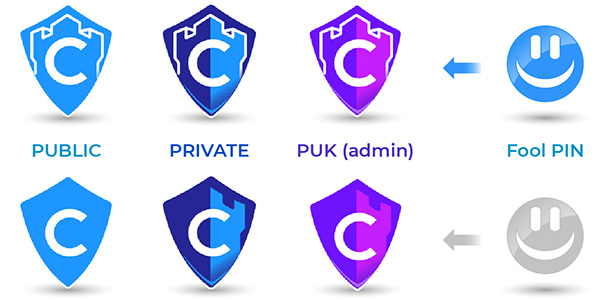
Example
Even now, when I called the author of the application, I gained a completely different perspective on the application and everything suddenly started to make sense to me. The author gave me a simple example with photos of lovers that you can save in the application. I admit, it's a slightly dishonest example, but this is perhaps the best way to understand it. So you have photos of lovers that you want to save somewhere. Since your wife knows the password to your iPhone, it is clear that you will not save the photos to the gallery. Here is the opportunity to use the Camelot application. But the wife knows you're using Camelot and catches you using it to view photos. At that point, you quickly click on the Camelot button in the lower right corner, instantly "logging out" of the session. If your wife is going to stand over you and pound on you to show her what you've been viewing, simply enter a different passcode to display other files. In the end, you can make an excuse that you were looking at the photos of the gifts you have prepared for your wife for Christmas...
What if I forget the PUK?
If you get to the point where you forget the PUK, you have two options. You can either say goodbye to your data for good, or you can use the guardian angels you created before you forgot your PUK. Guardian angels are, in a way, your close friends, or anyone you trust. If you appoint someone as your guardian angel, you give them a so-called seal, which you can use to get back to Camelot. The seal is created in the form of a QR code and not only that you can send it to a user or friend. You can, for example, print it out on paper and lock it in a safe, or you can save one of them to another device. There are no limits to imagination, and this is doubly true in the case of guardian angels and seals. When setting up the seals, you still need to choose how many must be scanned to unlock the app. For example, if you choose four seals and have a total of six created, you will need to scan at least four of those six seals to unlock Camelot.
Additional functions and Marker
Other great features include, for example, the aforementioned secure chat. However, the chat in Camelot is not just any other, because in order to connect with the user you want to communicate with, you must first scan your seals together. So definitely don't look for a name or phone number search engine in Camelot to contact the user. You can also use Camelot's password generator, for example, when you don't know what password to choose for a certain account. The Marker function is also great, which can highlight groups of characters that are easier to remember when displaying a confusing password. Marker is a feature that Camelot is even trying to patent since no one has used it before.
Backup
So that you don't lose your data within Camelot, the developers themselves offer you a backup on their servers. Of course, you have to pay a fee for a certain cloud size, but it's definitely not something that will break the bank. 1 GB on the cloud will cost you 19 crowns per month, 5 GB at 39 crowns per month and 15 GB at 59 crowns per month. Backups are stored on the servers for 90 days. When you perform a backup, you get a special backup ID that you can use to restore the backup. So if you were to switch to another device, all you need to upload the backup is its ID and, of course, the password. So if you want to keep your data safe even on a remote cloud, you can use the backups offered by Camelot itself.
Available for iOS i Android
When I tested the first version of Camelot in February this year, it was only available for the operating system iOS. However, the pro version is now fully ready Android. Even users Androidu can now experience what Camelot can do for themselves. I would definitely like Camelot to appear later on the macOS operating system or Windows, where, in my opinion, it would have at least as much potential as on mobile devices. Camelot is available in two versions, i.e. a free version and a paid version. In the free version, you can create a maximum of two different passcodes, you will not get the chat option, and you will be shown ads. The paid version, which costs 129 crowns, is then completely unlimited.
záver
If you are looking for a security application that can really do more than enough, then Camelot is the right choice. On the one hand, you will certainly be interested in the fact that other users cannot know what you are hiding in Camelot, and on the other hand, the interesting fact is that Camelot is used to store absolutely all data and information - not just photos or notes. If, over time, you learn to use PUK, passcodes and possibly also Fool PINs perfectly and understand the principle of the application, then I intend to claim that your phone will truly become an impregnable castle. What is certainly interesting is the fact that an experienced twenty-member team worked on Camelot, which included, for example, a former expert from O2 who created the SIM card architecture, as well as a sophisticated PIN manager for this company. I would definitely like it if Camelot reached beyond the borders of the Czech Republic and got to know literally the whole world as part of its future. In my opinion, the application is really well made and deserves great success.
- You can download the Camelot app for Android using this link
- You can download the Camelot app for iOS using this link

